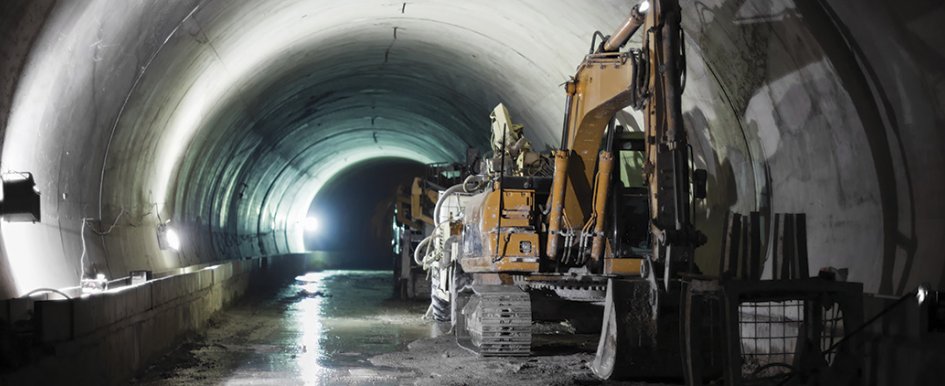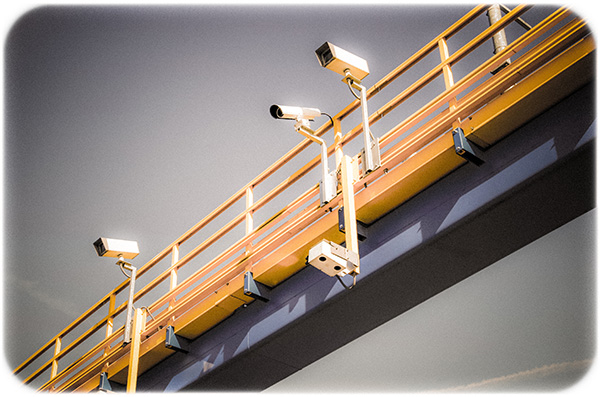
Smart devices are not the way of the future; they have already arrived. Beyond smartphones, other connected devices are becoming more prevalent. From refrigerators to thermostats, interiors are increasingly connected, and the outside world is following the trend. Sensors are being integrated into everything from bridges to buildings, providing helpful data on a number of factors, from traffic patterns to tunnel shifting and concrete corrosion. As with most technology on the market, smart infrastructure has its risks and benefits. However, as far as the construction industry is concerned, the good significantly outweighs the bad.
Smart infrastructure exists in a variety of forms. In London, a massive transit tunnel is being built underneath an existing mail tunnel. To ensure that the operation is safely conducted, sensors have been placed throughout the mail tunnel, keeping researchers and workers constantly aware of any shifting that may occur. The tunnels are closely monitored for signs that shifting is exceeding safe levels. A relatively small space separates the tunnels, which run alongside each other for more than 100 meters. This project is the first in London in which tunnels have been dug so close together for such a long stretch of time. Should the project be successful and the shifting limited, it will open up opportunities for more tunnels in London. The composition of the mail tunnel is similar to the majority of the existing tunnels in the city, so it will serve as an accurate test for future projects. This project could have a big impact, allowing new infrastructure to be built without endangering existing buildings and tunnels.
Concrete is another example of how sensors can be of great value. When embedded within the concrete, sensors can measure everything from temperature and moisture content to conductivity. This data is invaluable for determining the potential for corrosion in reinforced concrete structures. One of the major challenges for embeddable sensors, however, is protecting them from concrete’s harsh alkaline environment. Longevity is also an issue. Some sensors are designed to measure factors that affect curing time, with a battery life that only lasts weeks. However, the longer the embedded sensor lasts, the more data can be acquired. If the sensors could last years, infrastructure owners could be alerted to deteriorating conditions as they happen. Using this information, repairs could be conducted as needed, rather than waiting to make costly replacements. Advancements like these could change the way infrastructure is built and managed.
A combination of road sensors and cameras has allowed many cities to optimize the length of any given signal at a traffic light. Specifically, a new system in Toronto has been tested that allows every intersection to be monitored from all directions. In this way, the green light can be automatically adjusted to be the most efficient length of time possible. Besides the 25 percent decrease in travel time, this smart system significantly reduces greenhouse gas emissions associated with idling vehicles. Considering the current emphasis on sustainability and environmental protection, smart traffic systems could allow for a measurable reduction in the environmental impact of motor vehicles, not to mention the increase in efficiency that would impact people from all industries.

Sensors embedded in concrete and tunnels allow for a significant reduction in costs because they allow for early detection of potential problems. Using today’s conventional methods, infrastructure often needs to be replaced in part or even in whole. By using sensors, problems could be detected early enough that they could be repaired instead. Meanwhile, the traffic sensors create a more efficient flow of traffic. This, in turn, leads to saved time and gas money. For the average person, this is already a huge benefit. For those in the construction industry, the cost savings and time savings are even more important: the greater reliability translates into a stronger reputation.
As with many things, there are risks associated with smart infrastructure. For many, the biggest concern seems to revolve around dependency. If we begin to rely on sensors to tell us when the infrastructure is failing, we may begin to ignore other warning signs. This especially applies in cases where the technology may fail or malfunction without our knowledge. We might not be immediately aware of dead batteries or corroded sensor casings, although these would certainly affect the data being collected.
When new technology replaces old technology or the old manual way of doing things, often the old knowledge fades into disuse. If these technologies become the norm, people may no longer be taught how to inspect the infrastructure in low-tech ways. Should these technologies then fail, very few people will be equipped to verify the infrastructure. Once something is fully relied upon, it can be very difficult to break dependency of it.
When properly utilized, smart infrastructure and emerging technologies can cut costs, save lives and protect the environment.
